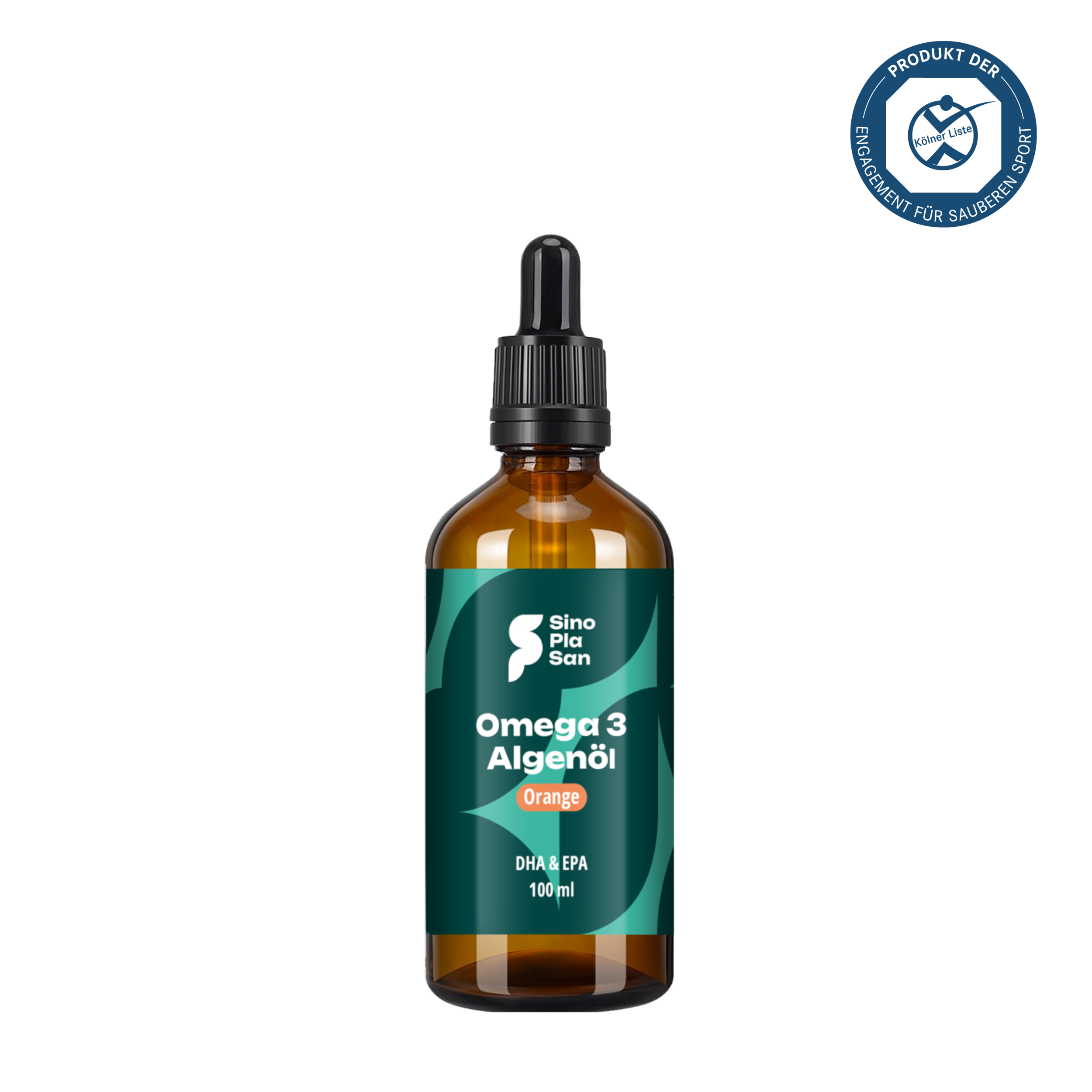
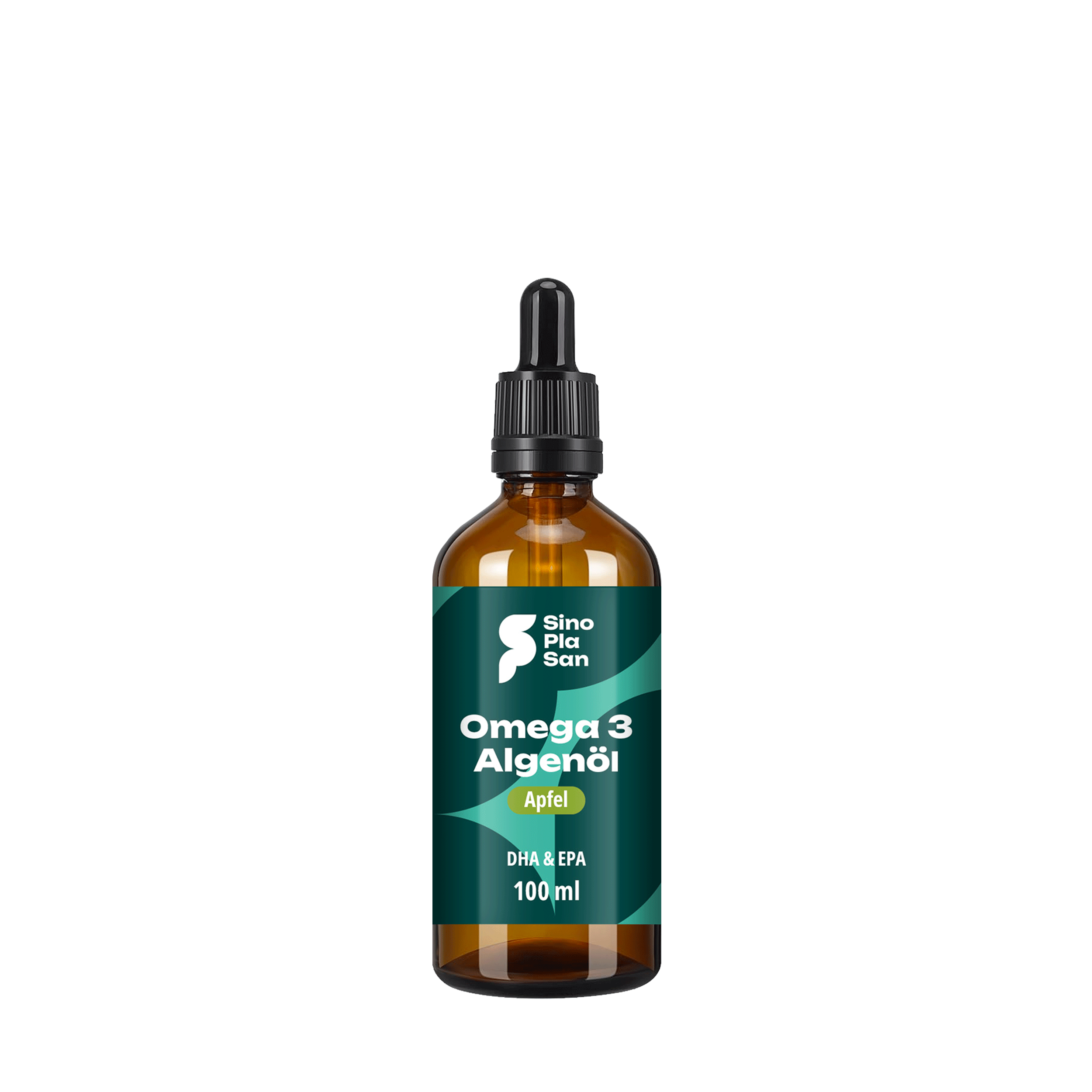
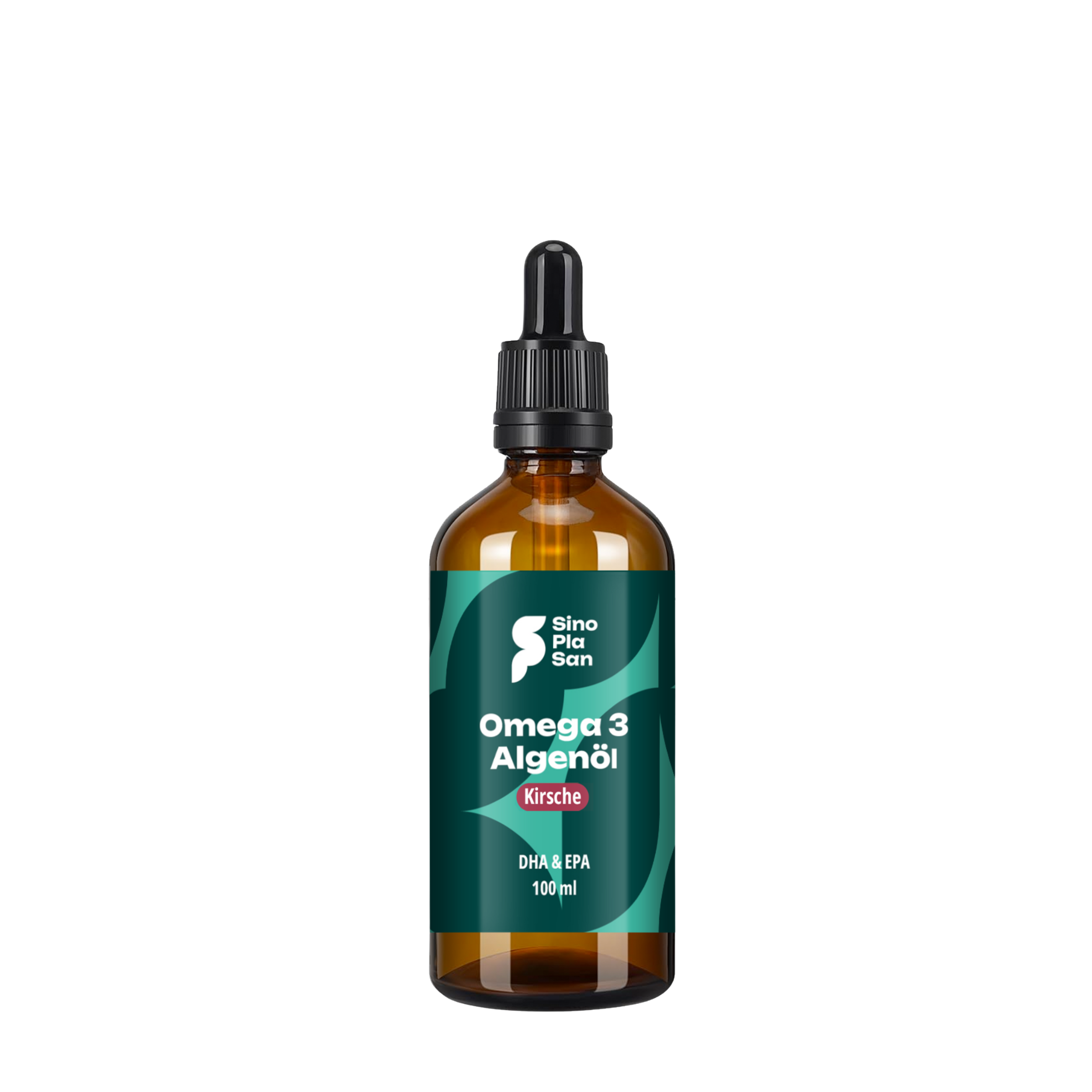

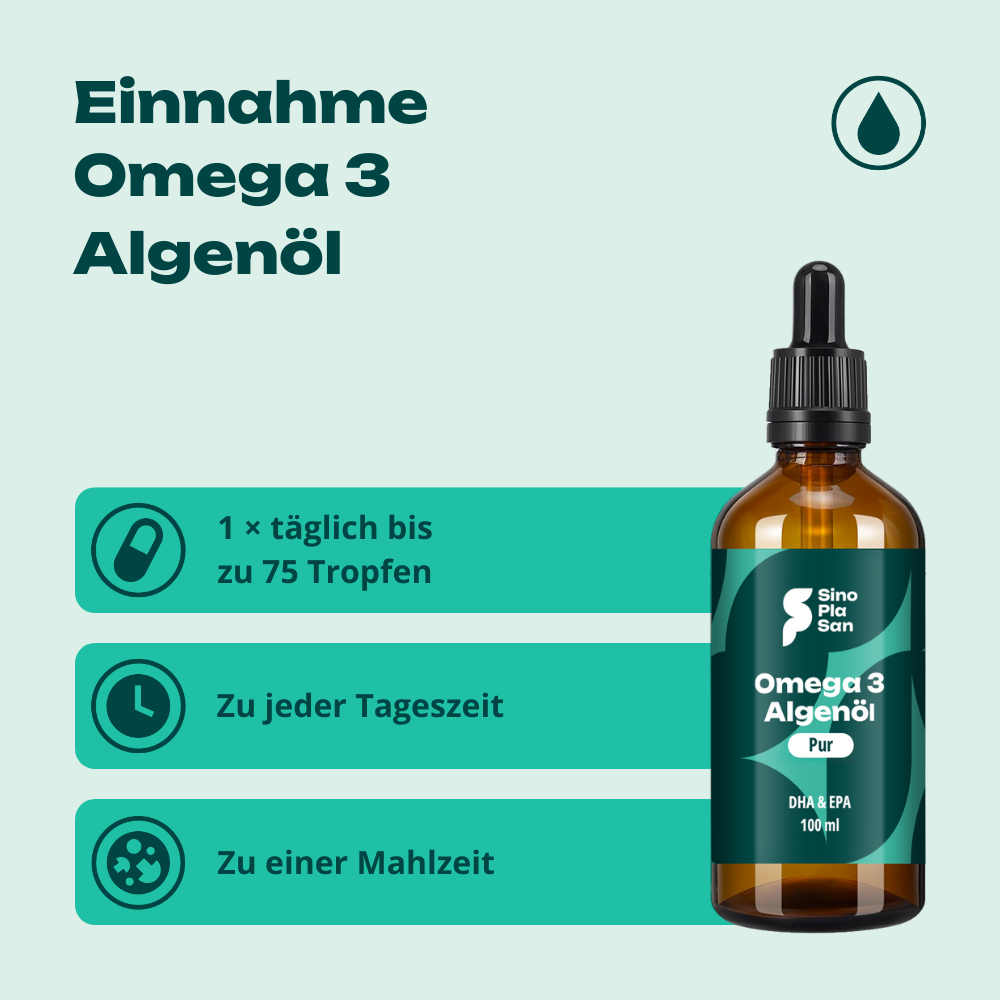


Omega-3 algae oil DHA+EPA 100 ml with flavor
Tax included. Shipping calculated at checkout
Rich in omega-3 fatty acids
Premium dietary supplements
Rich in omega-3 fatty acids. Premium food supplement.
Omega-3 fatty acids are essential for a healthy lifestyle. Around 70% of the German population does not have an adequate supply of omega-3. Support your health with omega-3 fatty acids.
Rich in omega-3 fatty acids
Premium dietary supplements
Rich in omega-3 fatty acids. Premium food supplement.
Omega-3 fatty acids are essential for a healthy lifestyle. Around 70% of the German population does not have an adequate supply of omega-3. Support your health with omega-3 fatty acids.
-
gluten free
-
lactose-free
-
vegan
-
GMO-free
-
without undesirable additives
-
sugar free

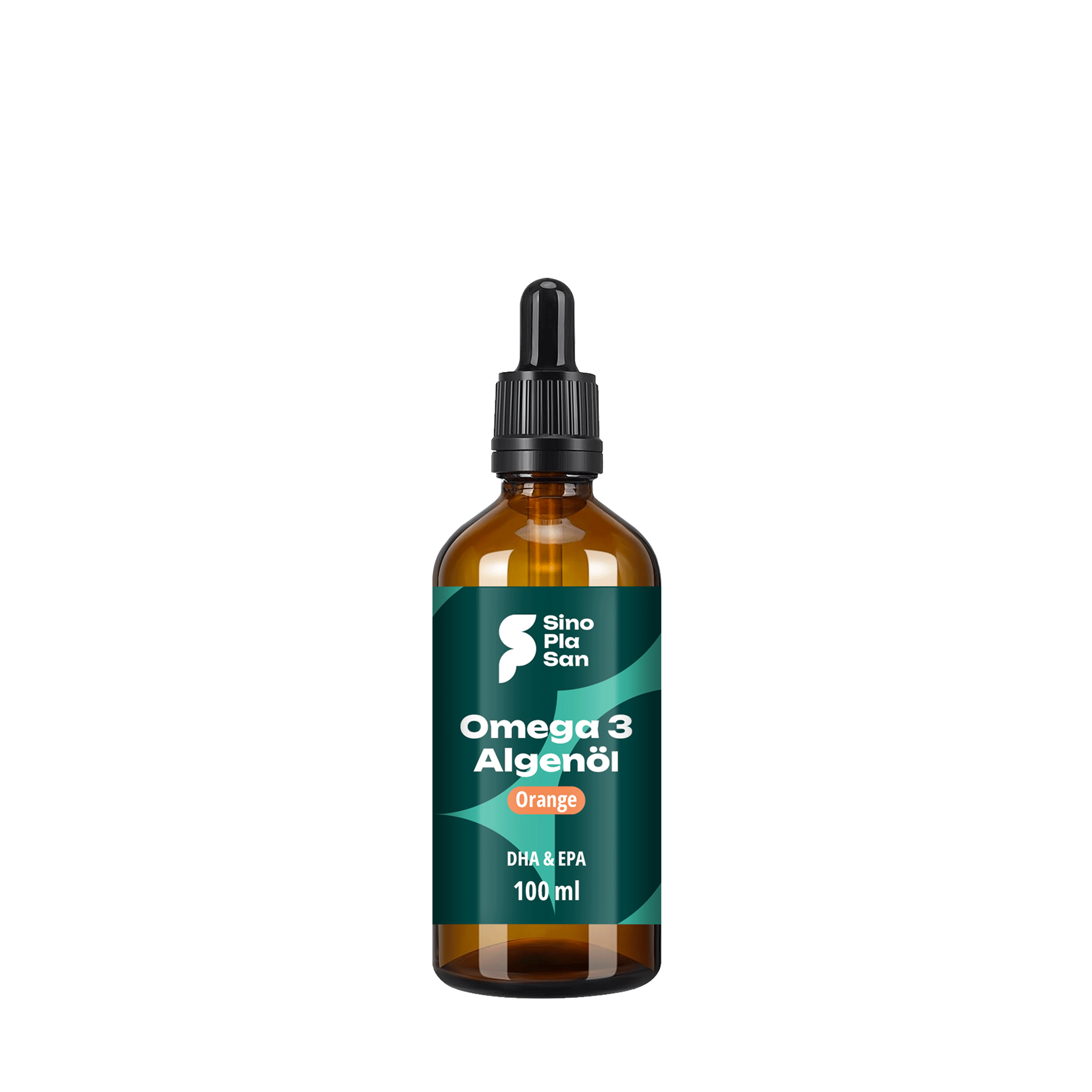
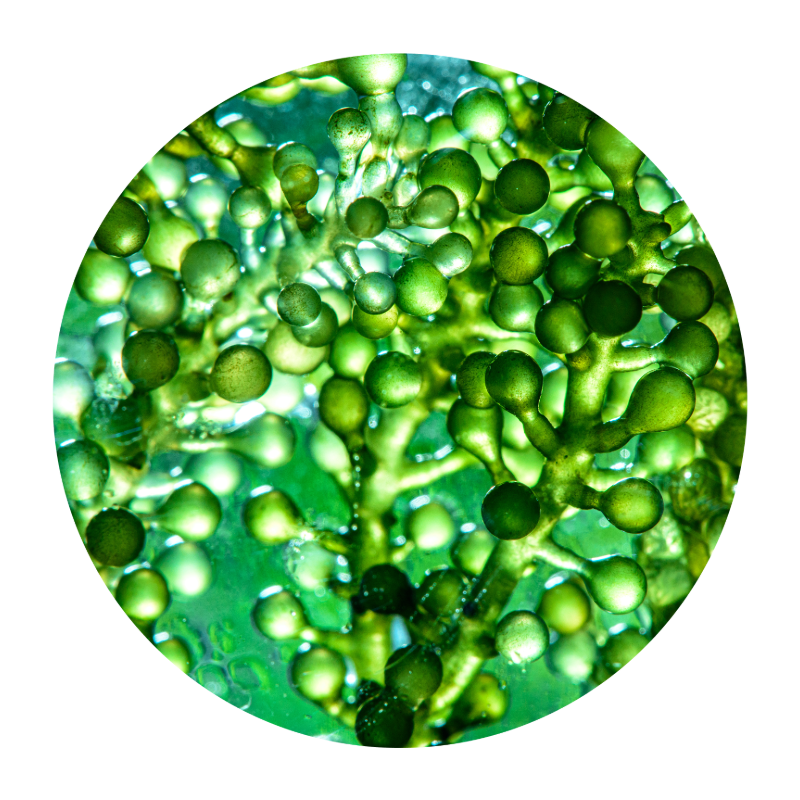

Comparison of pure Omega-3 algae oil and Omega-3 algae oil capsules

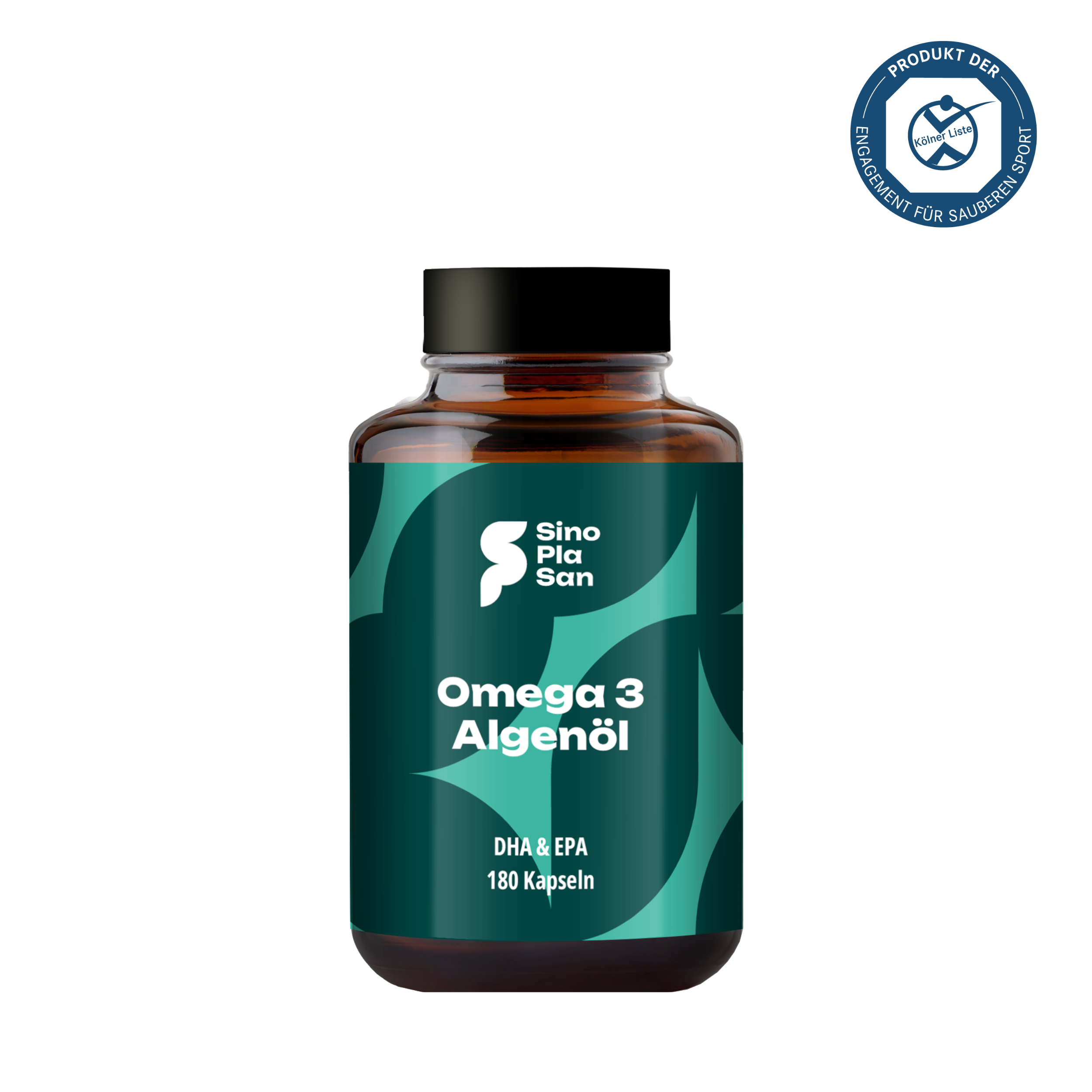
Liquid Omega-3 algae oil allows for customizable dosing, allowing you to adjust the amount precisely to your health needs. This is especially useful if you have specific health goals.
Omega-3 algae oil capsules offer a convenient solution because they contain pre-dosed amounts of omega-3 fatty acids. This makes them straightforward and time-saving to use, especially if you prefer a clear and simple way to take them.
We offer liquid Omega-3 algae oil in three delicious flavors: orange, apple, and cherry. These flavors make taking it more pleasant and mask the natural algae taste.
Omega-3 algae oil capsules are tasteless and can mask the natural algae taste and smell of the oil.
12 months from date of manufacture, once opened keep refrigerated and consume within 3 months.
12 months from date of manufacture, after opening ideally also keep refrigerated and consume within 3-4 months.
Omega-3 algae oil in liquid form can be consumed directly. Our bottles allow for easy dosing, making it particularly user-friendly. The liquid oil can also be stirred into food or drinks as long as they are no longer hot.
Omega-3 algae oil capsules are easy to take and require no special preparation. They are ideal for people on the go or looking for a convenient solution.
Pure omega-3 algae oil is generally more cost-effective, especially if you buy it in larger quantities. This can be a cost-effective option.
Omega-3 algae oil capsules are more expensive than pure algae oil because the production of the capsules and the special processing affect the costs.
Questions and Answers
What should I take algae oil for?
Why algae oil instead of fish oil or krill oil?
Is the algae oil produced using the Omegasafe or Oxyguard process?
The Omegasafe or Oxyguard process is only used for oilseeds such as linseed, from which linseed oil is obtained. As algae oil is obtained using a completely different process, it cannot be produced using the Omegasafe or Oxyguard process. These processes are not transferable to algae oil. The Omegasafe or Oxyguard process is intended to ensure that the oil is protected from oxidation and therefore remains fresh. Of course, this requirement is also taken into account in the algae oil production process and the production process is designed in such a way that the algae oil is protected from oxidation in the best possible way. To this end, the algae oil is also produced in the absence of light and oxygen. In order to make the freshness of the algae oil visible to the end consumer, we test and publish the so-called TOTOX value for each batch (for more information, see "What is the TOTOX value?" and view the analysis in the image gallery). This value is usually in the top range of 2-5 and confirms the freshness of the oil.
Is the algae oil winterised?
Ja, die Winterisation ist bei der Algenöl-Herstellung normalerweise ein Standardprozess. Ziel dieses Prozesses ist es, Komponenten zu entfernen, die bei niedrigeren Temperaturen das Algenöl zum Kristallisieren bringen würden. Durch die Winterisation ist das Algenöl besonders klar und kristallisiert nicht.
What should I take algae oil for?
Why algae oil instead of fish oil or krill oil?
Is the algae oil produced using the Omegasafe or Oxyguard process?
The Omegasafe or Oxyguard process is only used for oilseeds such as linseed, from which linseed oil is obtained. As algae oil is obtained using a completely different process, it cannot be produced using the Omegasafe or Oxyguard process. These processes are not transferable to algae oil. The Omegasafe or Oxyguard process is intended to ensure that the oil is protected from oxidation and therefore remains fresh. Of course, this requirement is also taken into account in the algae oil production process and the production process is designed in such a way that the algae oil is protected from oxidation in the best possible way. To this end, the algae oil is also produced in the absence of light and oxygen. In order to make the freshness of the algae oil visible to the end consumer, we test and publish the so-called TOTOX value for each batch (for more information, see "What is the TOTOX value?" and view the analysis in the image gallery). This value is usually in the top range of 2-5 and confirms the freshness of the oil.
Is the algae oil winterised?
Ja, die Winterisation ist bei der Algenöl-Herstellung normalerweise ein Standardprozess. Ziel dieses Prozesses ist es, Komponenten zu entfernen, die bei niedrigeren Temperaturen das Algenöl zum Kristallisieren bringen würden. Durch die Winterisation ist das Algenöl besonders klar und kristallisiert nicht.
How is the algae oil produced?
Where is the algae oil produced?
Where does the raw material for the algae oil, i.e. the microalgae Schizochytrium sp., come from?
Is the algae oil certified organic?
Is the algae oil laboratory-tested for heavy metals, microbiology, DHA-EPA content, TOTOX value, etc.?
When is the best time to take algae oil?
Are the omega-3 fatty acids in triglyceride form?
Yes, the omega-3 algae oil is in triglyceride form!
How is the algae oil produced?
Where is the algae oil produced?
Where does the raw material for the algae oil, i.e. the microalgae Schizochytrium sp., come from?
Is the algae oil certified organic?
Is the algae oil laboratory-tested for heavy metals, microbiology, DHA-EPA content, TOTOX value, etc.?
When is the best time to take algae oil?
Are the omega-3 fatty acids in triglyceride form?
Yes, the omega-3 algae oil is in triglyceride form!



